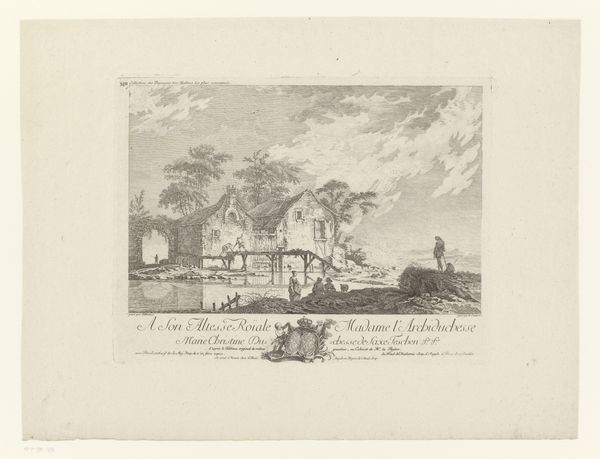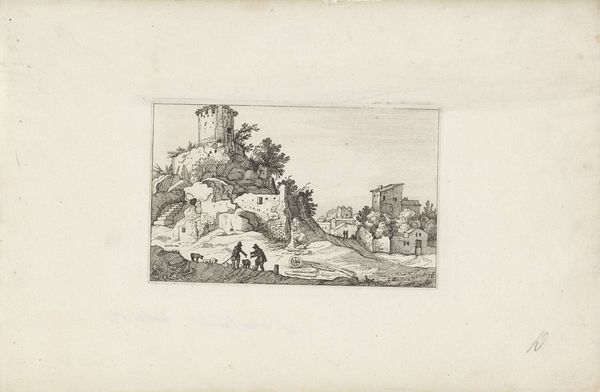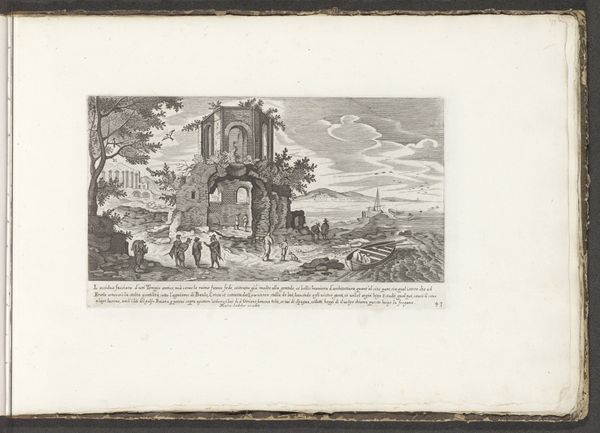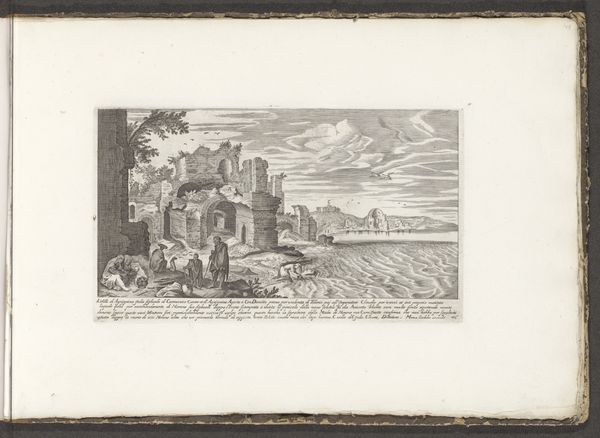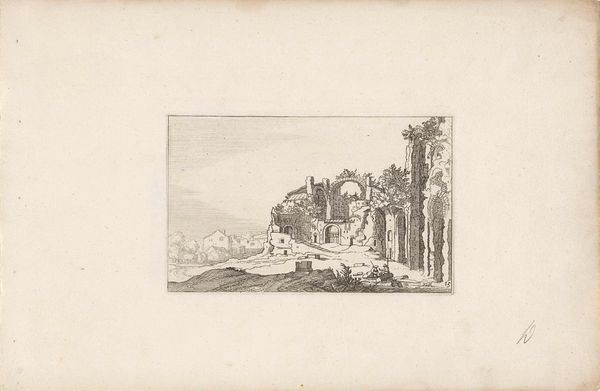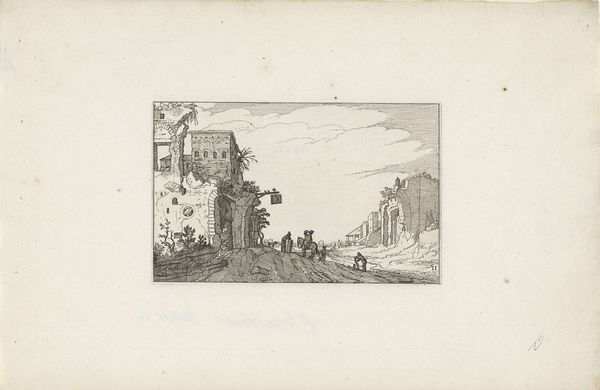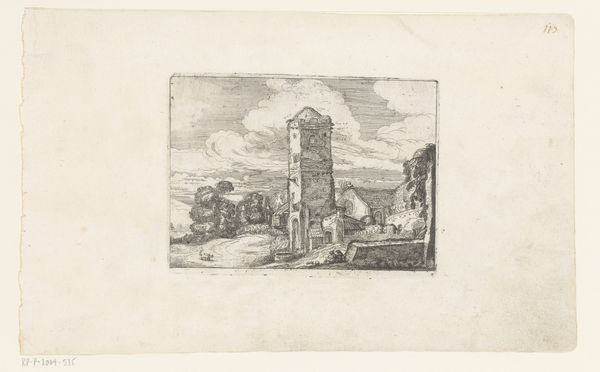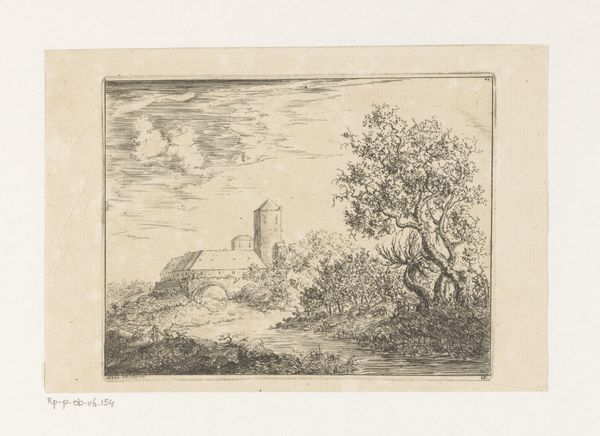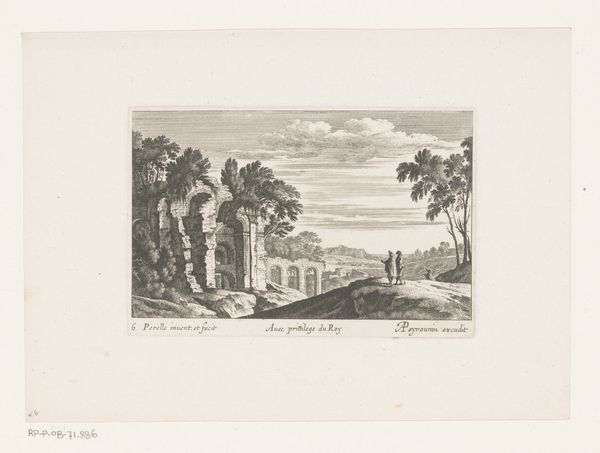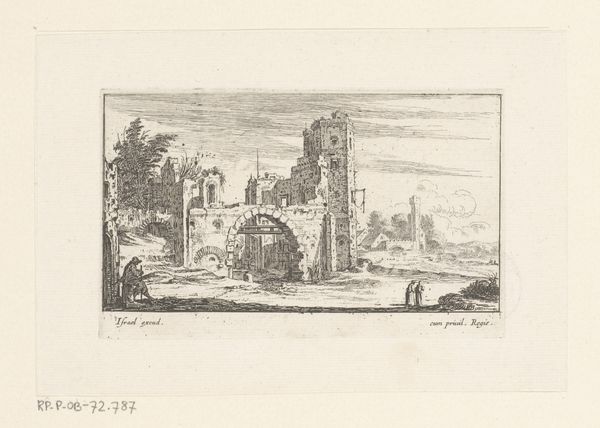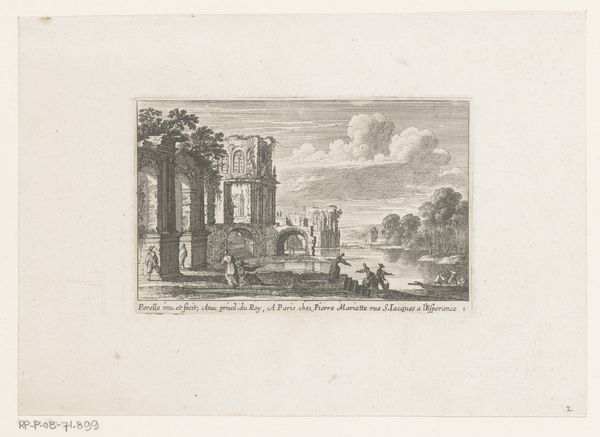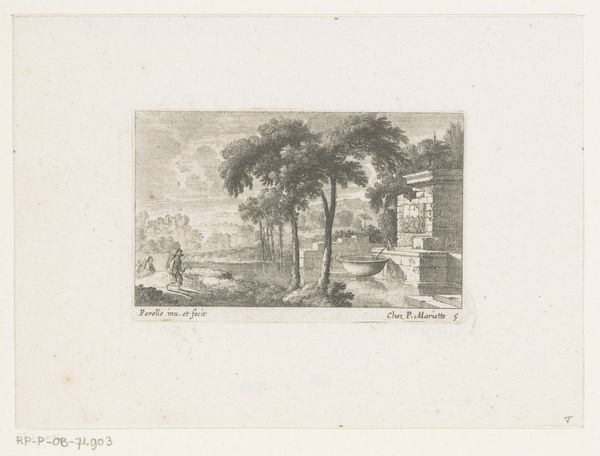
drawing, print, etching, ink
#
drawing
#
baroque
#
dutch-golden-age
# print
#
etching
#
landscape
#
ink
Dimensions: height 100 mm, width 157 mm
Copyright: Rijks Museum: Open Domain
Claes Jansz. Visscher made this print of a coastal road by a round ruin sometime in the early 17th century using etching and engraving techniques. Look closely, and you will see how the contrasting lines create depth and texture; the density of marks suggesting shadow and form. This wasn’t just a drawing, but a labor-intensive mechanical process, a collaboration between the artist’s vision and the engraver's skill. The materiality of the print – the paper, the ink, the incised lines – speaks volumes about the social context in which it was made. Prints like this were relatively affordable and widely distributed, and provide insight into the contemporary interest in ruins as picturesque motifs. Consider how the very act of reproducing this image made it accessible to a broader audience, democratizing art in a way previously unimagined, while also feeding into a growing market for art. Appreciating the printmaking process allows us to consider the social and economic factors that shaped its creation and circulation.
Comments
No comments
Be the first to comment and join the conversation on the ultimate creative platform.
